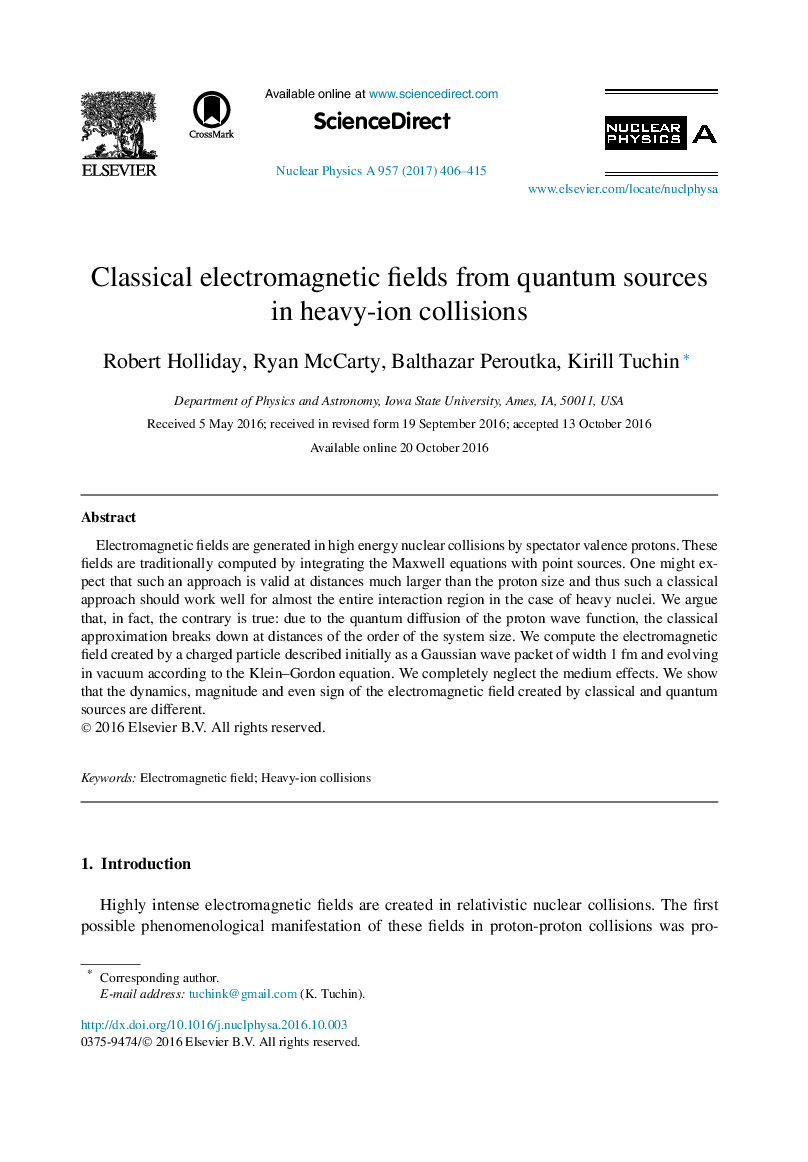| Article ID | Journal | Published Year | Pages | File Type |
|---|---|---|---|---|
| 8182912 | Nuclear Physics A | 2017 | 10 Pages |
Abstract
Electromagnetic fields are generated in high energy nuclear collisions by spectator valence protons. These fields are traditionally computed by integrating the Maxwell equations with point sources. One might expect that such an approach is valid at distances much larger than the proton size and thus such a classical approach should work well for almost the entire interaction region in the case of heavy nuclei. We argue that, in fact, the contrary is true: due to the quantum diffusion of the proton wave function, the classical approximation breaks down at distances of the order of the system size. We compute the electromagnetic field created by a charged particle described initially as a Gaussian wave packet of width 1 fm and evolving in vacuum according to the Klein-Gordon equation. We completely neglect the medium effects. We show that the dynamics, magnitude and even sign of the electromagnetic field created by classical and quantum sources are different.
Related Topics
Physical Sciences and Engineering
Physics and Astronomy
Nuclear and High Energy Physics
Authors
Robert Holliday, Ryan McCarty, Balthazar Peroutka, Kirill Tuchin,
